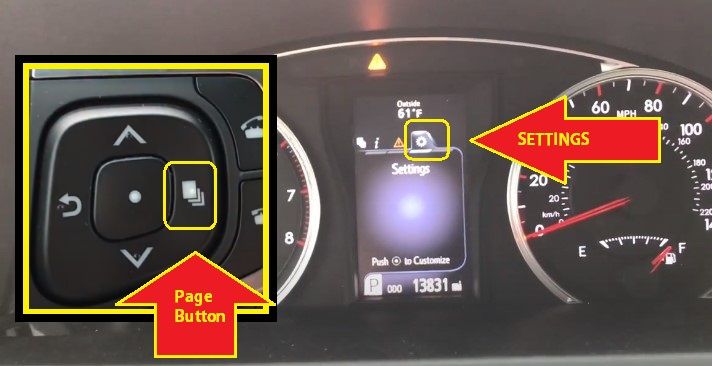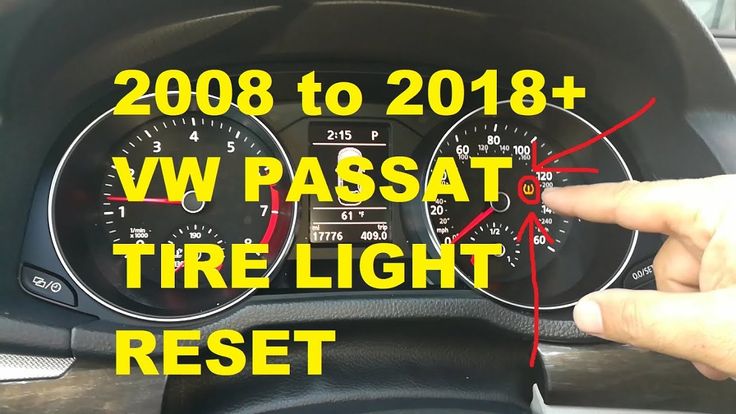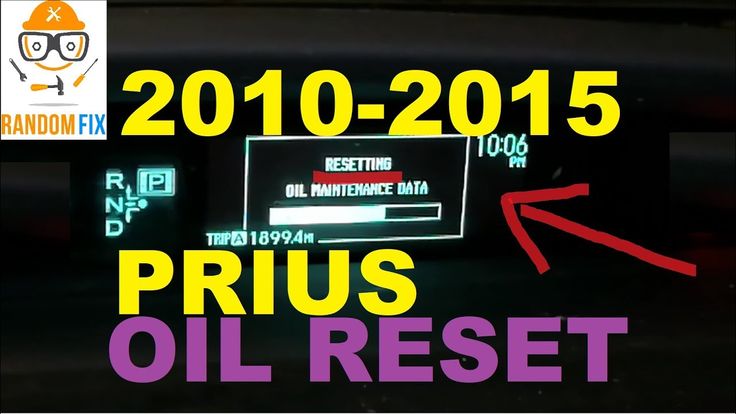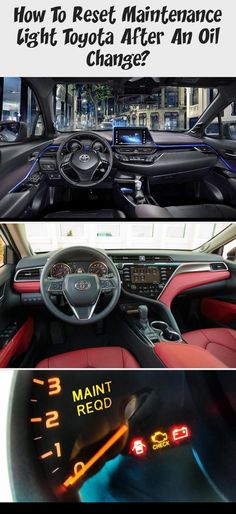SUBJECT VEHICLES: Toyota Tacoma, 2006-16
RELEARN PROCEDURE? Yes.
SPECIAL TOOLS NEEDED: Yes. Toyota Techstream.
The tire pressure monitoring system (TPMS) of the 2006-2016 Toyota Tacoma is designed to provide warning when tire inflation pressure of one or more tires (including the spare tire) is low. A tire pressure monitor valve sub-assembly equipped with a tire pressure sensor/transmitter is installed in each tire and wheel assembly.
The sensor measures the air pressure and internal temperatures of the tire, then the measured values and transmitter ID are transmitted to the tire pressure monitor antenna and receiver assembly on the body as radio waves. These radio waves are then sent to the tire pressure monitor ECU from the tire pressure monitor receiver. If the transmitter ID has already been registered, the ECU compares the measured air pressure value and the standard value.
When the value is less than the standard value registered in the tire pressure monitor ECU, the tire pressure warning light on the instrument cluster will turn on.
In order to reset the warning threshold in accordance with variant tire pressure settings due to tire types and installation positions, a tire pressure warning reset switch is used. This switch is used to initialize the system after certain repair procedures.
NOTE: Due to the air valve angle of the tire pressure warning valve and transmitter, they may not be used on wheels other than those originally installed on the vehicle.
Under the following conditions, the system may not function properly:

If any other wheels than the specified ones are used, the system may not function properly because the radio waves are differently transmitted from the tire pressure sensor.
Radio waves from the air pressure sensor installed on the spare tire cannot be received. If this problem has occurred, rotate the spare tire 90 degrees and recheck the system. Depending on the tire type, the system may not function properly even though the specified wheels are used.
Tire pressure monitoring warning light
NOTE: The tire pressure warning light may turn on due to natural causes such as natural air leaks or tire pressure changes caused by temperature. In this case, adjusting the tire pressure will turn off the warning light.
In this case, adjusting the tire pressure will turn off the warning light.
NOTE: If the warning light turned on due to very low outside temperatures (such as in winter) causing decreases in tire pressure, adjust the pressure and initialize the system. See “Initializing tire pressure monitor system.” Then leave the ignition on for about 20 minutes, and increase the tire inflation pressure by 3 – 4 psi (20 – 30 kPa).
When the tire pressure warning light does not go off, or when it comes on during driving, check tire pressure (including the spare tire) and adjust as necessary. The warning light should turn off within a few minutes. If the warning light is still on even though the tire pressure is correctly adjusted, the tire could be punctured. Repair as necessary. If the warning light stays on or blinks, there is a malfunction in the TPMS. See the appropriate manufacturer service information.
Reset procedures
NOTE: The system will need to be initialized when tires are replaced with tires of different pressures; or when the tire pressure sensor and/or tire pressure monitor ECU are replaced. See “Initializing tire pressure monitor system.” When a tire pressure sensor and/or tire pressure monitor ECU are replaced, the sensor ID must be memorized by the tire pressure monitor ECU prior to system initialization. See “Tire pressure sensor registration.”
See “Initializing tire pressure monitor system.” When a tire pressure sensor and/or tire pressure monitor ECU are replaced, the sensor ID must be memorized by the tire pressure monitor ECU prior to system initialization. See “Tire pressure sensor registration.”
When the tire pressure warning light does not go off, or when it comes on during driving, check tire pressure (including the spare tire) and adjust as necessary. The warning light should turn off within a few minutes.Initializing tire pressure monitor system
NOTE: It is necessary to register the transmitter ID in the tire pressure warning ECU, prior to initialization, when replacing the tire pressure sensor and/or tire pressure warning ECU. See “Tire pressure sensor registration.”
NOTE: Initialization is normally completed within five to six minutes. If the initialization has not been completed successfully, DTC C2177/77 is set after the vehicle is driven for 20 minutes or more.
NOTE: Initialization can be terminated by connecting terminals 13 (TC) and 4 (CG) of the DLC3 (see Figure 2).
1) Set the tire pressure of all tires to the specified value(s).
2) Turn the ignition switch to ON.
3) Press and hold the tire pressure warning reset switch for three seconds or more so that the tire pressure warning light blinks three times (see Figure 1).
4) Turn the ignition switch OFF.
5) Connect the Techstream to the DLC3.
6) Turn the ignition switch to ON, then the Techstream ON.
7) Enter the following menus: Chassis / Tire Pressure Monitor / Data List.
8) Confirm that the expected tire pressure data of all tires are displayed on the Techstream screen.
NOTE: It may take up to about five to six minutes to update the tire pressure data. If the values are not displayed after about five to six minutes, perform troubleshooting according to the inspection procedure for DTCs C2121/21 to C2124/24.
9) The initialization is complete when the Data List “ID Tire Inflation Pressure” display shows the correct pressures.
Tire pressure sensor registration
NOTE: When a tire pressure sensor and/or tire pressure monitor ECU are replaced, the sensor ID must be memorized (registered) by the tire pressure monitor ECU prior to system initialization.
To perform this procedure, the Techstream must be used. It is not necessary to register the sensor ID(s) when only a tire rotation is performed.
NOTE: For 2006-07 models, when the system is in initialization mode, after the TPMS reset switch has been operated, registration mode cannot be entered until the initialization process is canceled or completed. Initialization mode can be terminated by making a short circuit between terminals 13 (TC) and 4 (CG) of the DLC3 connector.
For all other models, registration can be started while in initialization mode. However, initialization will be canceled when the registration is started.NOTE: Before beginning the registration process on vehicles where tire pressure sensors have not been replaced, retrieve sensor transmitter ID(s) using Techstream or by reading the ID on the tire pressure sensor. If a sensor is being replaced with a new one, make a note of the eight-digit number (transmitter ID) before installation, as it cannot be seen after the sensor is installed (see Figure 3).
1) Set the tire pressure of all wheels to pressure specified on the tire and loading information label.
2) Ensure the ignition switch is OFF.
3) Connect the Techstream to DLC3.
4) Turn the ignition switch to ON, then the Techstream ON.
5) Perform the transmitter ID registration. Enter the following menus:
Chassis / Tire Pressure Monitor / Utility / ID Registration.
6) Input the transmitter IDs (ID1 to ID4) using the Techstream and transmit them to the tire pressure warning ECU.
7) The “ID Registration is Complete” is displayed on the Techstream display.
NOTE: It may take about two or three minutes until the values are displayed. If the values are not displayed after a few minutes, perform troubleshooting according to the inspection procedure for DTCs C2121/21 to C2124/24.

8) Confirm that expected tire pressure data from all wheels is displayed on the Techstream display. Check the Data List. Enter the following menus: Chassis / Tire Pressure Monitor / Data List.
Demounting/mounting procedures
CAUTION: The tire should be demounted from the wheel using the tire changer manufacturer’s instructions. Use the following information to avoid damage during the demounting/mounting procedures.
NOTE: The system will need to be initialized when tires are replaced with tires of different pressures; tire pressure sensor and/or tire pressure monitor ECU are replaced. When a tire pressure sensor and/or tire pressure monitor ECU are replaced, the sensor ID must be memorized by the tire pressure monitor ECU prior to system initialization. See “Reset procedures.”
Tire pressure sensor
CAUTION: DO NOT try to install a tire pressure sensor in a steel wheel or aftermarket wheel. Due to the unique air valve angle of the tire pressure sensor, use only in original style factory wheels.
CAUTION: The use of tire sealants is strictly prohibited for vehicles equipped with TPMS. Tire sealants can clog tire pressure sensors.
CAUTION: Be sure to reinstall tire valve caps, or dirt or moisture could get into the valve core and cause air leakage. Use only the original valve cap.
If any other valve cap is used, it may corrode or melt, and become extremely difficult to remove.
NOTE: The average life of the grommet of the tire pressure sensor is approximately five years, at which time it must be replaced. If the valve is leaking air, but it is less than five years old and the grommets are in good condition, retighten valve nut to 35 in.-lbs. (4 N.m).
Whenever the tires must be replaced, replace grommets for tire pressure sensors as well.
NOTE: If the tire pressure valve sub-assembly is going to be replaced, make a note of the seven-digit number (transmitter ID) before installation, as it cannot be seen after sensor is installed (see Figure 3). Whenever a new sensor is installed, it will need to be registered in the tire pressure monitor ECU.Removal
1) When replacing a wheel or tire, tire pressure sensors must be set up in one of the following ways:
2) Remove the wheel. Remove the valve core and cap, and release air from the tire (see Figure 4).
Remove the valve core and cap, and release air from the tire (see Figure 4).
NOTE: Keep the removed cap, valve core, nut and washer.
3) After ensuring that air is sufficiently released, remove the nut and washer that is used to fix the tire pressure sensor and drop the sensor inside the tire.
NOTE: Be careful not to damage the tire pressure sensor due to interference between the sensor and the tire bead.4) After dropping the tire pressure sensor into the tire, disengage the bead using the shoe of the tire remover (see Figure 5).
5) Remove the bead on the upper side in the usual operation.
6) Take out the sensor from the tire, and remove the bead on the lower side as in usual operation.
NOTE: Check that no damage or cracks are identified on the grommet. If so, replace the grommet together with the washer and nut.
7) Remove the inner grommet from the tire pressure sensor.
NOTE: The tire pressure sensor is powered by a lithium battery. When disposing the sensor, remove the battery and dispose properly. Installation
Installation
1) Insert the tire pressure monitor valve into the valve installation hole.
Insert from the inside of the rim so that the print surface can be seen (see Figure 3). Check for the following:
2) Install the washer on the tire pressure monitor valve from the rim side, and tighten the nut to 35 in.-lbs. (4 N.m). See Figure 6. Check for the following:

NOTE: The specified torque only applies the first time the washer is used.
3) After the tire is inflated, the valve nut may be loose. Retighten the nut to the specified torque, and then check for air leaks with soapy water.
CAUTION: If the sensor is positioned outside this area, it generates interference with the tire bead, causing possible damage to the sensor.
4) Set the wheel disc to the mounting machine, and install the lower tire bead. Position the main body of the tire pressure sensor in the shaded area as shown in the illustration (see Figure 7).
5) Making sure that the tire bead and tool do not interfere with the main body of the sensor and that the sensor is not clamped by the bead, install the upper bead.
6) When putting air into the tire, first install the tire pressure valve straight on the stem of the tire pressure warning valve and transmitter.
7) Install the tire and wheel assembly.
8) When a new sensor is installed, the ID code will need to be registered. See “Reset procedures.”
9) After completing the operation, remove the valve core to rapidly release the air in the tire. Ensure that the tire pressure warning light comes on. If the warning light does not come on, refer to the appropriate manufacturer service information to perform the repair.
10) If there is an air leakage, tighten the nut to a force of 35 in.-lbs. (4 N.m), and push the valve core two to three times to remove any dirt attached to the valve core. If air continues to leak, replace the grommet, washer, and nut. ■
Torque specifications
Component Ft. -lbs. (N.m)
-lbs. (N.m)
Wheel nut 83 (113)
In.-lbs. (N.m)
Tire pressure sensor nut 35 (4)
Information for this column comes from Mitchell 1’s “Tire Pressure Monitoring Systems Guide” for domestic and import vehicles. Headquartered in Poway, Calif., Mitchell 1 has provided quality repair information solutions to the automotive industry for more than 80 years. For more information, visit www.mitchell1.com.
To read more TPMS columns, see:
Volkswagen Rabbit, Golf, GLI, GTI, Jetta and R32
Honda CR-V 2007-2013
2007-13 Chrysler/Jeep Compass and Patriot
General Motors/Chevrolet Colorado and Canyon, 2006-12
2011-2015 Chrysler Ram Pickups
TRD Wheels Alert!Upgrade your ride with the NEW Geniune TRD Bronze Wheel.
Shop Now
Select a Year:
"},"vehicleDescription":null},"interpret":{"exampleSearch":"8976904010","searchSummary":"","refineSearch":"","searchWordList":"","ukeyMake":5775,"ukeyModel":89501,"ukeyCategory":0,"modelYear":"ALL","nModelYear":0,"ukeyTrimLevel":0,"ukeyDriveLine":0,"searchTerm":"","introduction":"Found an exact match for stock code \"8976904010\". for your Toyota tacoma ","relatedSearchLink":"Show all Toyota Tacoma parts like \"Tire Pressure Monitoring System (TPMS) Control Module\"","ukeyModelRange":0},"cart":false,"performance":true,"accessory":false,"isRelated":false,"id":"RelatedProductsComponent","title":"RelatedProductsComponent","style":"","dataAttributes":null,"ariaAttributes":null,"shouldRenderVueComponent":true,"message":null,"localizedResources":{}} };
for your Toyota tacoma ","relatedSearchLink":"Show all Toyota Tacoma parts like \"Tire Pressure Monitoring System (TPMS) Control Module\"","ukeyModelRange":0},"cart":false,"performance":true,"accessory":false,"isRelated":false,"id":"RelatedProductsComponent","title":"RelatedProductsComponent","style":"","dataAttributes":null,"ariaAttributes":null,"shouldRenderVueComponent":true,"message":null,"localizedResources":{}} };
MSRP $ 644.55
Add to Cart
Select product options
Select Dealer
"},"vehicleDescription":null},"interpret":{"exampleSearch":"8976904010","searchSummary":"","refineSearch":"","searchWordList":"","ukeyMake":5775,"ukeyModel":89501,"ukeyCategory":0,"modelYear":"ALL","nModelYear":0,"ukeyTrimLevel":0,"ukeyDriveLine":0,"searchTerm":"","introduction":"Found an exact match for stock code \"8976904010\".for your Toyota tacoma ","relatedSearchLink":"Show all Toyota Tacoma parts like \"Tire Pressure Monitoring System (TPMS) Control Module\"","ukeyModelRange":0},"cart":false,"performance":false,"accessory":false,"isRelated":true,"id":"AlsoBoughtComponent","title":"AlsoBoughtComponent","style":"","dataAttributes":null,"ariaAttributes":null,"shouldRenderVueComponent":true,"message":null,"localizedResources":{}} };
You are an enthusiastic owner of a recent car, the benefits of tactile devices, integrated technologies should bring you considerable ease and comfort in using your Toyota Tacoma, which says technology talks about electricity, and as we all unfortunately often know that disorders to be resolved. Today we will focus on the tire pressure sensor and specifically on how to reset the tire pressure sensor on a Toyota Tacoma so that this indicator never appears on the dashboard again. To do this, we will divide our content into two parts: first of all, we will focus on the classic situation where the tire pressure indicator light appears and the technique to follow, and then on the situation with the tire indicator that remains on, inflated tires. so how to reset this tire sensor on toyota tacoma.
Today we will focus on the tire pressure sensor and specifically on how to reset the tire pressure sensor on a Toyota Tacoma so that this indicator never appears on the dashboard again. To do this, we will divide our content into two parts: first of all, we will focus on the classic situation where the tire pressure indicator light appears and the technique to follow, and then on the situation with the tire indicator that remains on, inflated tires. so how to reset this tire sensor on toyota tacoma.
First, we will focus on the usual approach to reset the tire sensor on Toyota Tacoma, which if it lights up, here are the main methods:

Now that you have tried the common technique of removing a tire pressure sensor on a Toyota Tacoma, and it didn't work, we'll move on to the second alternative, which is that the tires on my Toyota Tacoma are well inflated and I still want that light to go out. This almost certainly means you have Faulty tire pressure sensor. This requires to reset the value on your car's dashboard. However, be careful not to do this while driving as pressure fluctuations will affect your pressure sensors. Typically, you need to look at the parameters of the car, then you should look for an option for inflation detection or "deflation detection". While on this tab, you must hold down the select button or reset button depending on the year of manufacture of your Toyota Tacoma. until a message appears from the car console confirming that the reset is taken into account (usually takes a few seconds). You can now turn off the ignition and restart your Toyota Tacoma to see if the tire pressure light has gone out.
This almost certainly means you have Faulty tire pressure sensor. This requires to reset the value on your car's dashboard. However, be careful not to do this while driving as pressure fluctuations will affect your pressure sensors. Typically, you need to look at the parameters of the car, then you should look for an option for inflation detection or "deflation detection". While on this tab, you must hold down the select button or reset button depending on the year of manufacture of your Toyota Tacoma. until a message appears from the car console confirming that the reset is taken into account (usually takes a few seconds). You can now turn off the ignition and restart your Toyota Tacoma to see if the tire pressure light has gone out.
 Keep in mind that in most cases the unit price is around 120 euros. Another solution that some choose to do because the problem may recur in some series is to disable the sensors with your carrier and diagnose your vehicle. However, this approach is not recommended as it may result in mishandling and malfunction of your Toyota Tacoma. Now you have all the keys in your hands to know how to reset the Toyota Tacoma tire pressure sensor.
Keep in mind that in most cases the unit price is around 120 euros. Another solution that some choose to do because the problem may recur in some series is to disable the sensors with your carrier and diagnose your vehicle. However, this approach is not recommended as it may result in mishandling and malfunction of your Toyota Tacoma. Now you have all the keys in your hands to know how to reset the Toyota Tacoma tire pressure sensor. For more Toyota Tacoma tips, take a look at the Toyota Tacoma category.
| DIY
| |||
Toyota Land Cruiser - Video Lesson Model: Toyota Land Cruiser J200, MK 11 - Years 2007-2022 To reset the Toyota Land Cruiser Tire Pressure Warning Light, you must first verify that all tires are at the correct inflation pressure, as indicated on a decal located on the driver's door pillar. To proceed with the reset operation, turn on the instrument panel and hold the SET button located at the bottom of the steering column in line with the brake pedal. Posted on 22 October 2021 by ScegliAuto | Why does the Check Engine light come on? With this video tutorial we can understand why the engine warning light comes on. When the yellow light comes on, it indicates a less serious problem, however, when the red light comes on, it indicates a more serious problem, so the car should be stopped as soon as possible to avoid damage. The check engine light comes on when one of the sensors associated with, for example, the anti-pollution system detects a malfunction (eg too low or too high pressure in the turbine, clogged particulate filter, etc.). ). If you turn off the car engine and start it again and the light stays on, the problem may be in the electronic system. |